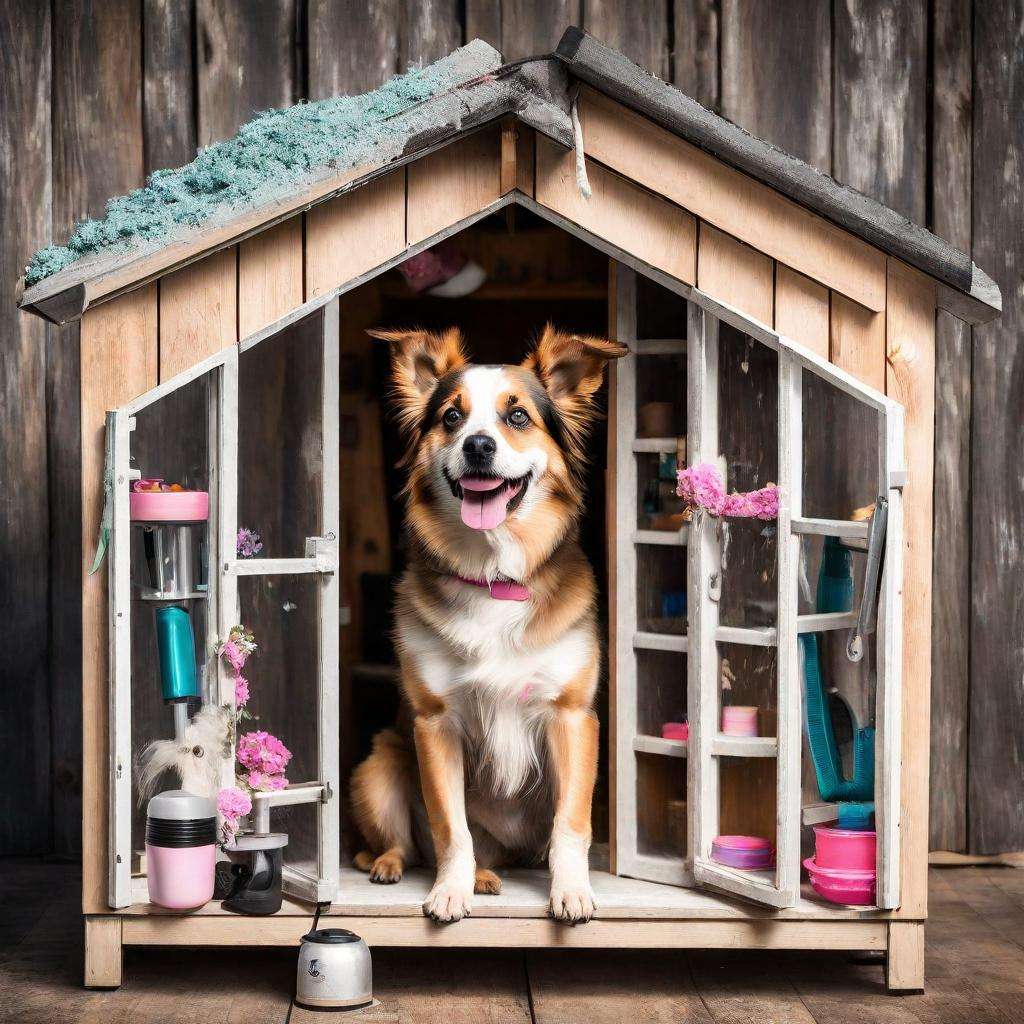Dog owners take great pleasure in giving their canine companions the best care and attention imaginable. As part of their commitment to their four-legged pals, proper grooming is essential to preserving their health. Welcome to the world of dog house grooming, where we, as passionate animal lovers, are here to help you keep your canine partner in the best possible health and look.
Understanding the Importance of Dog House Grooming
Grooming isn’t just about making your dog look adorable, although that’s certainly a delightful perk. It’s about promoting their overall health and comfort. Let’s delve into the myriad benefits of regular dog house grooming:
1. Healthier Coat, Happier Dog
Regular grooming sessions help keep your dog’s coat clean and free from dirt, debris, and excess oil. This reduces the risk of skin infections and keeps your pup’s skin in tip-top condition.
2. Tangle-Free Tresses
Long-haired breeds, in particular, benefit from regular grooming, as it prevents painful matting and tangling of their fur, making them more comfortable and content.
3. Say Goodbye to Shedding
Effective grooming can significantly reduce the amount of hair your dog sheds around your home. This not only keeps your living space cleaner but also minimizes allergies for your family.
4. Early Detection of Health Issues
During grooming, you or your professional groomer can spot any unusual lumps, bumps, or skin issues that might have gone unnoticed otherwise. Catching health concerns early can be a lifesaver for your furry friend.
The Dog House Grooming Essentials
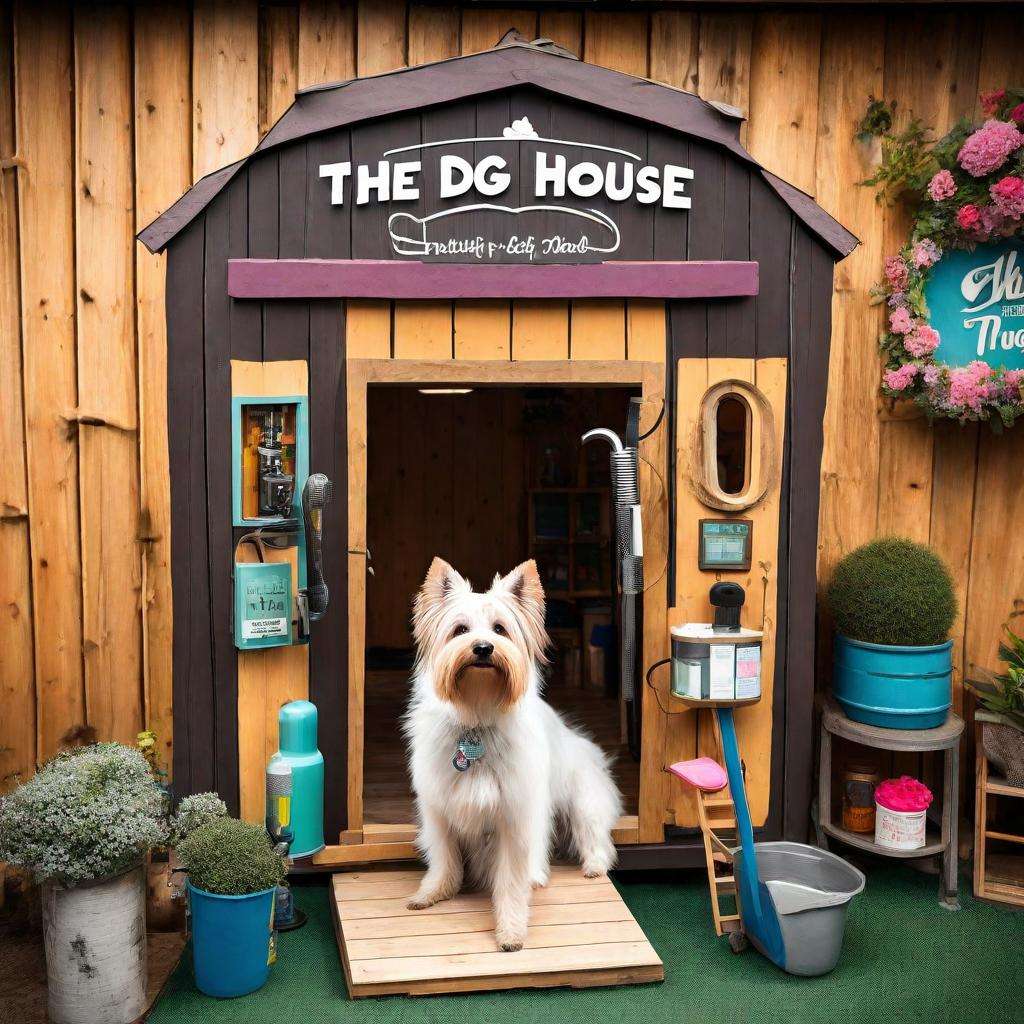
Now that we’ve established why dog house grooming is essential, let’s explore the tools and techniques you need to become a grooming pro:
1. Brushing: The Foundation of Grooming
Regular brushing is key to maintaining your dog’s coat. Different breeds require different brushes, so it’s crucial to choose one that suits your pup’s fur type. Brushing not only keeps the coat healthy but also provides an excellent opportunity for bonding.
2. Bath Time Bliss
Bathing your dog is a crucial aspect of grooming. Use a gentle, dog-specific shampoo and ensure the water is at a comfortable temperature. Be thorough but gentle to avoid causing stress to your furry friend.
3. Nailing It
Trimming your dog’s nails is essential to prevent discomfort and potential injuries. If you’re uncertain about this task, consider seeking professional assistance to avoid hurting your dog.
4. Ears and Eyes
Cleaning your dog’s ears and eyes is essential for maintaining good hygiene. Use a dog-friendly ear cleaner and a soft cloth to clean around the eyes gently.
5. Dental Care
Don’t overlook your dog’s dental hygiene. Regular tooth brushing and providing dental chews can help prevent dental issues down the line.
6. Professional Help
There are plenty of professional grooming services available for people who would rather take a hands-off approach. Dogs of various shapes and sizes can be handled by groomers with ease, making the process stress-free for your pet.
Tips for a Successful Dog House Grooming Session
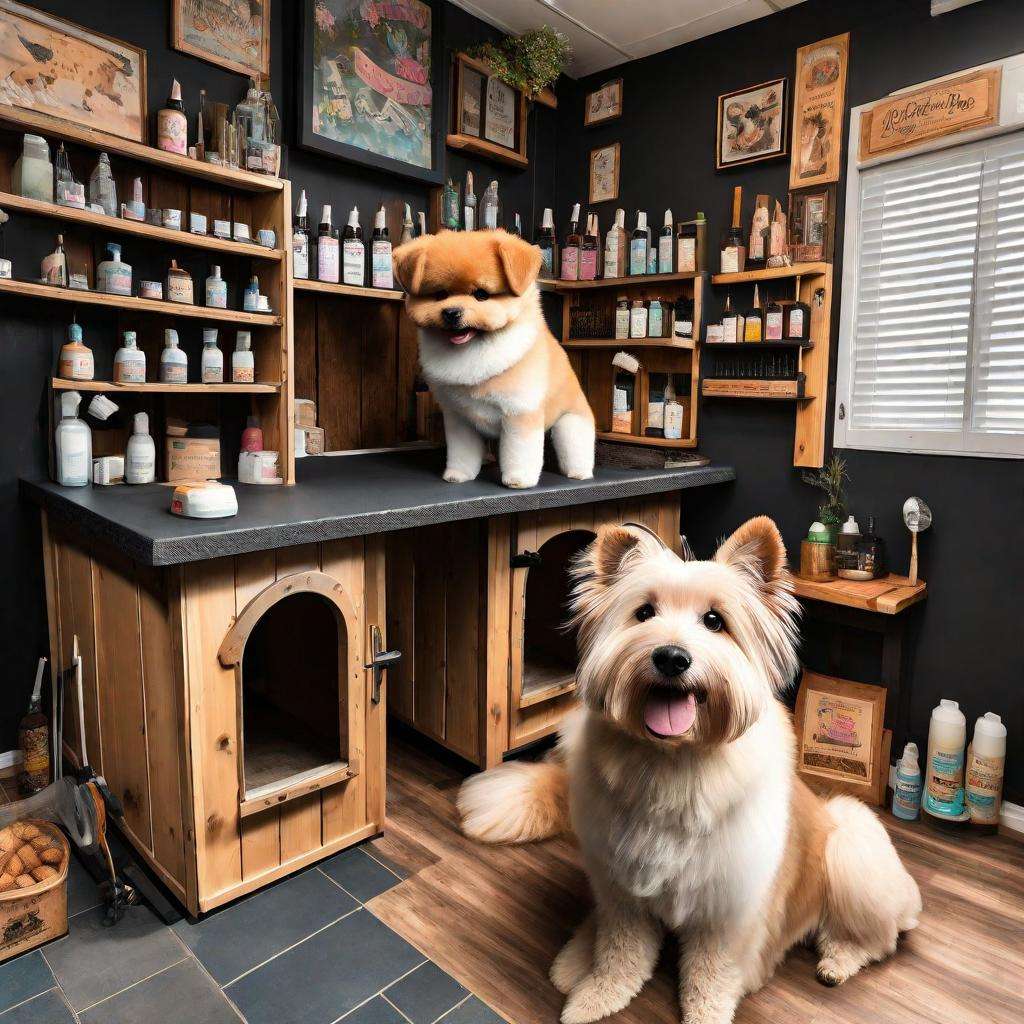
It might be rewarding to care for your dog at home. In order to succeed, keep in mind the following advice:
1. Create a Calm Atmosphere
Choose a quiet, well-lit space for grooming to help your dog feel relaxed and comfortable. Soft music or soothing sounds can also contribute to a serene environment.
2. Be Patient and Gentle
Grooming takes time, especially if your dog is not used to the process. Be patient and use gentle, reassuring words to comfort your pet throughout the session.
3. Positive Reinforcement
Reward your dog with treats and affection during and after grooming sessions. This positive reinforcement will help them associate grooming with a positive experience.
4. Consistency is Key
Establish a regular grooming schedule to keep your dog’s coat and overall well-being in top shape. Consistency is the key to success in this regard.
The Verdict: Dog House Grooming is a Must
In conclusion, dog house grooming is not just a luxury but a necessity for any responsible dog owner. Regular grooming ensures your canine companion is healthy, comfortable, and looks their best. Whether you choose to groom your dog at home or seek professional assistance, the key is to prioritize your pet’s well-being and happiness.
So, embrace the art of dog house grooming, and let your furry friend shine with inner beauty. Your dog deserves nothing but the best, and a well-groomed pup is a happy and healthy one.
Grooming for Different Dog Breeds
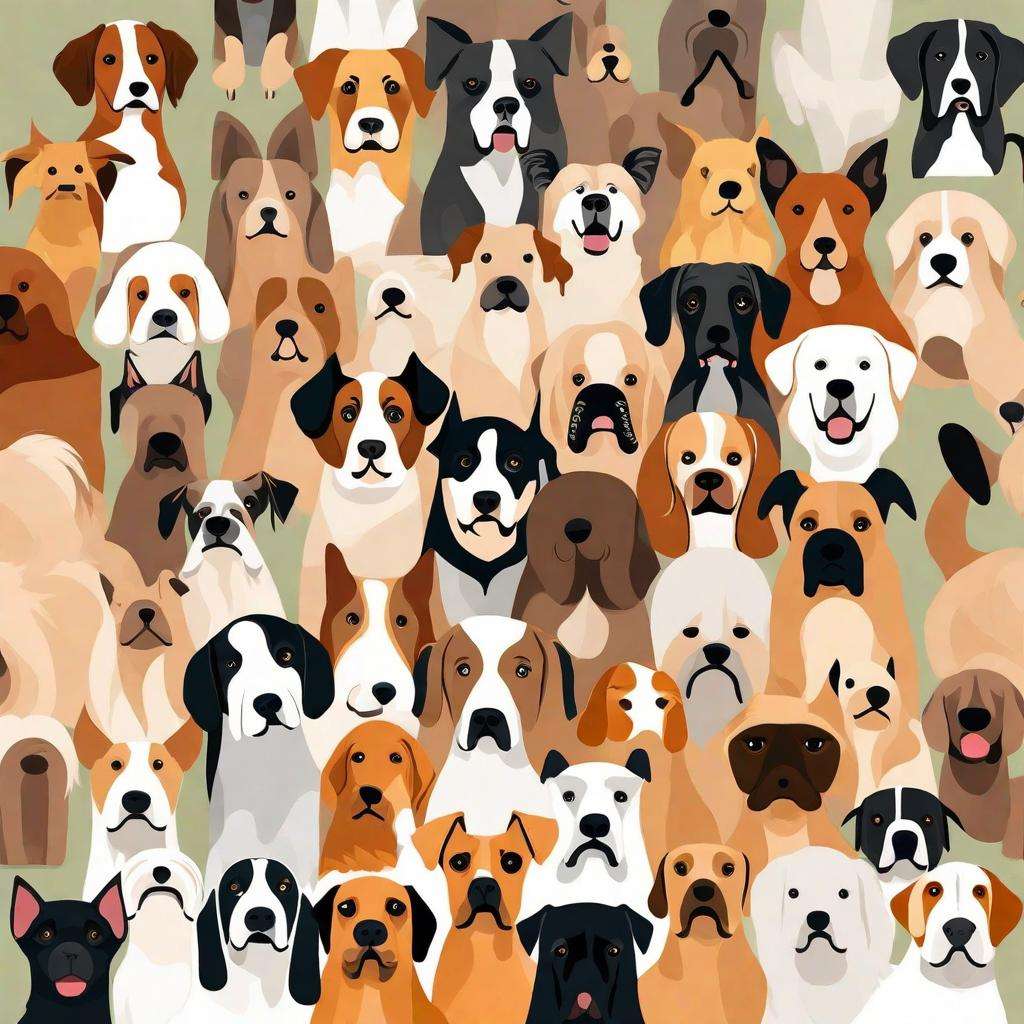
Different dog breeds have varying grooming needs due to their unique coat types, sizes, and activity levels. Here’s a breakdown of some common breeds and their grooming requirements:
1. Golden Retrievers
Golden Retrievers have a luxurious double coat that requires regular brushing to prevent matting. They tend to shed quite a bit, so consistent grooming can help control the loose fur.
2. Poodles
Poodles are known for their curly, hypoallergenic coats. Their fur doesn’t shed much, but it requires frequent professional grooming to prevent matting and maintain their signature styles.
3. Labrador Retrievers
Labrador Retrievers have short, dense coats that are relatively low-maintenance. Regular brushing helps keep their coat healthy, and an occasional bath will suffice.
4. Yorkshire Terriers
Yorkies have long, silky hair that can easily become tangled. Daily brushing and professional grooming are essential to keep their coat in top condition.
5. German Shepherds
German Shepherds have a dense double coat that sheds seasonally. During shedding seasons, they may require more frequent brushing to manage loose fur.
6. Shih Tzus
Shih Tzus have long, flowing hair that should be brushed daily to prevent matting. Many Shih Tzu owners opt for professional grooming to maintain their breed’s distinctive look.
Common Grooming Challenges and Solutions
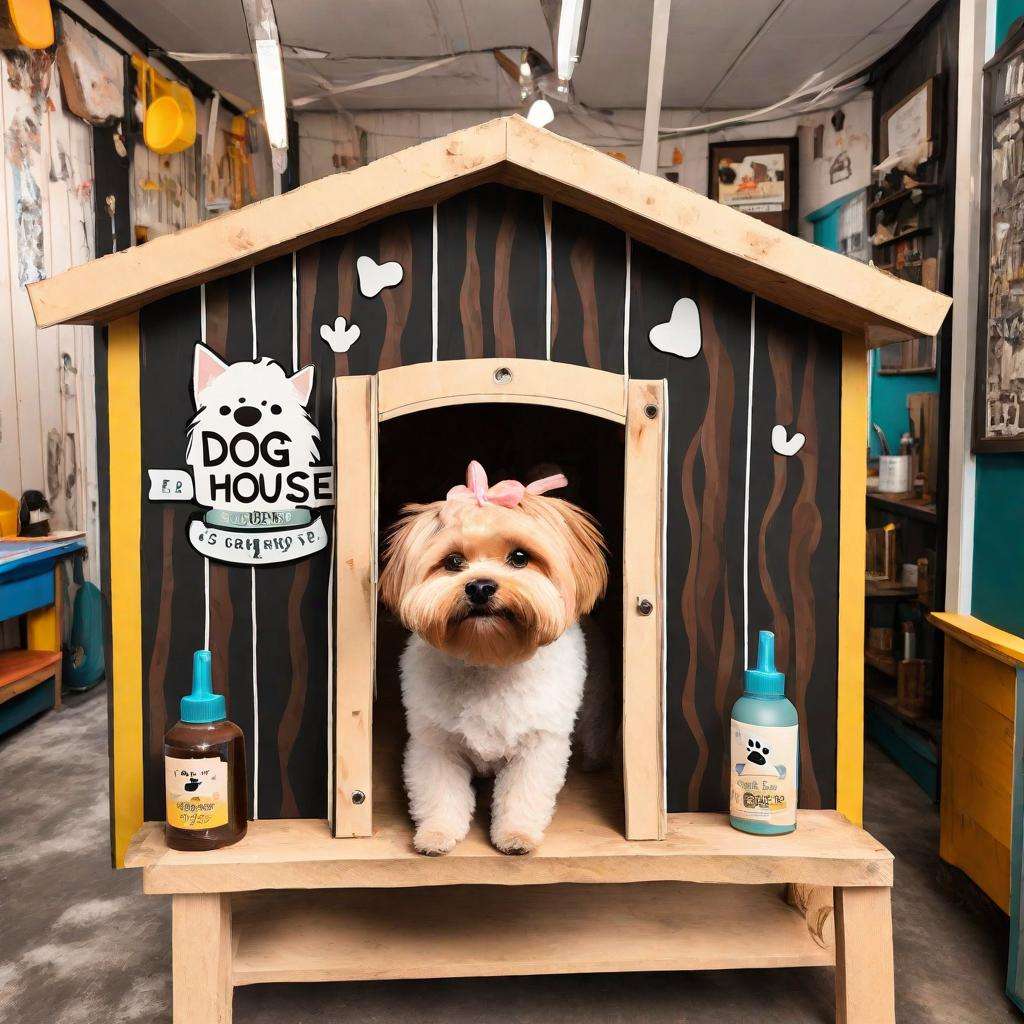
While grooming your dog, you may encounter specific challenges. Here are some common issues and how to address them:
1. Matted Fur
If your dog’s fur becomes matted, it’s crucial to address the issue promptly. Use a detangling spray and a wide-toothed comb to gently work through the mat. If it’s severe, consult a professional groomer.
2. Skin Irritations
If you notice redness, itching, or signs of skin irritation during grooming, it’s essential to identify the cause. It could be an allergic reaction, fleas, or other underlying issues. Consult your veterinarian for guidance.
3. Nervous or Aggressive Dogs
Some dogs may be nervous or aggressive during grooming. In such cases, it’s best to consult a professional groomer who is experienced in handling difficult dogs. They can ensure both your dog’s safety and the quality of the grooming session.
DIY vs. Professional Grooming
It’s up to you whether you decide to groom your dog yourself or hire a pro. Here are some things to think about:
DIY Grooming:
- Cost-effective
- Bonding opportunity with your dog
- Suitable for basic grooming needs
- Requires time and patience
Professional Grooming:
- Expertise in handling different breeds
- Advanced grooming techniques
- Ideal for intricate styles and breed-specific cuts
- Convenient for busy dog owners
Ultimately, the choice between DIY grooming and professional services depends on your dog’s needs and your comfort level with grooming tasks.
Wrapping Up: Your Pup’s Well-Being Comes First
In the world of dog house grooming, the ultimate goal is to ensure your furry friend is healthy, happy, and comfortable. Whether you choose to groom at home or opt for professional services, always prioritize your dog’s well-being.
Remember, grooming isn’t just about aesthetics; it’s a way to show your love and care for your beloved pet. So, embrace the art of dog house grooming, tailor it to your dog’s specific needs, and watch your furry companion thrive.
Specialized Grooming for Different Seasons
Dog house grooming isn’t a one-size-fits-all endeavor, and the changing seasons can impact your approach. Here’s how to adjust your grooming routine to suit the weather:
1. Spring Grooming
As spring ushers in warmer weather, your dog may shed their winter coat. Regular brushing helps remove loose fur and prevents matting. Be on the lookout for fleas and ticks, as they become more active in the spring.
2. Summer Grooming
Summer calls for more frequent baths, especially if your dog loves outdoor adventures. To shield your dog from UV rays that can be harmful, use a sunscreen made for dogs. Keep their coat moisturized to avoid flaking and drying out.
3. Fall Grooming
During the fall, your dog’s coat may thicken in preparation for winter. Brushing becomes crucial to remove dead hair and prevent matting. Pay attention to their paws as leaves and debris can get trapped between the toes.
4. Winter Grooming
In colder months, your dog’s coat acts as insulation. Regular brushing to remove dirt and debris is essential. Keep their paws clean and dry to prevent frostbite. Avoid excessive bathing, as it can strip their skin of essential oils.
Handling Sensitive Areas
Grooming involves attention to sensitive areas, and it’s essential to approach these with care:
1. Eyes and Ears
Use a damp cloth to gently clean around your dog’s eyes, removing any discharge. For ear cleaning, use a dog-specific ear cleaner and avoid inserting anything into the ear canal.
2. Oral Care
Dental hygiene is often overlooked but crucial for your dog’s health. Brush their teeth regularly with a dog toothbrush and toothpaste. Dental chews and toys can also help maintain oral health.
3. Anal Glands
If your dog scoots or shows signs of discomfort in the rear area, it may be due to impacted anal glands. Consult your veterinarian or a professional groomer for assistance.
DIY Dog House Grooming Tips
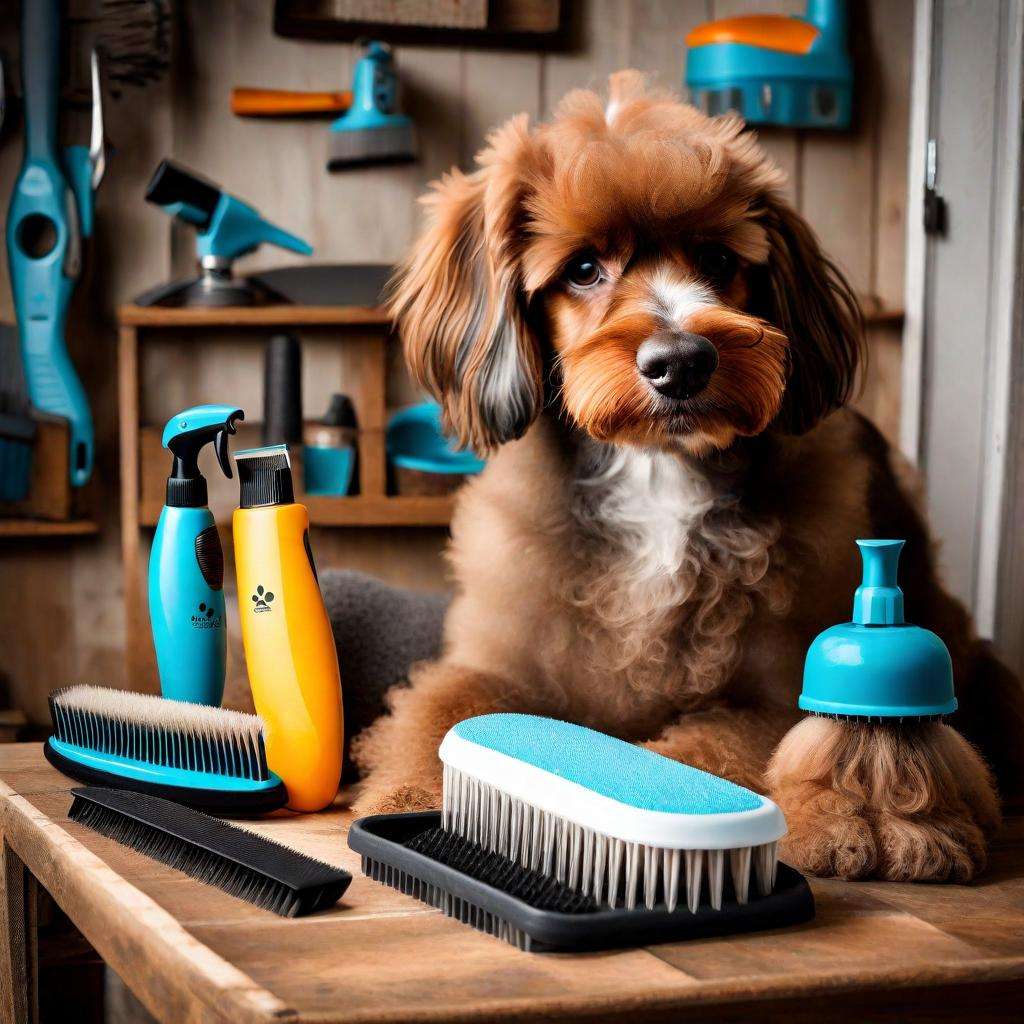
For those who choose to groom their dogs at home, here are some additional tips for a successful DIY grooming session:
1. Invest in Quality Tools
High-quality grooming implements, like brushes, combs, and scissors, can greatly improve the grooming procedure. Purchase the greatest equipment you can afford.
2. Practice Patience
Grooming can be a learning curve for both you and your dog. Be patient and take breaks if needed. Reward your pup with treats and praise for good behavior.
3. Learn Breed-Specific Styles
If you have a specific breed, research their grooming requirements and style. Understanding your dog’s breed-specific needs ensures a tailored approach to grooming.
4. Seek Professional Advice
Don’t hesitate to consult a professional groomer or your veterinarian if you encounter challenges or are unsure about specific grooming tasks. They can provide guidance and demonstrations.
In the world of dog house grooming, your commitment to your dog’s well-being shines through. Whether you opt for DIY grooming or enlist the help of a professional, the key is to prioritize your furry friend’s health, happiness, and comfort.
So, embark on this grooming journey with confidence, armed with the knowledge and tools to keep your beloved pet looking and feeling their absolute best. After all, a well-groomed pup is a happy pup!
Advanced Grooming Techniques
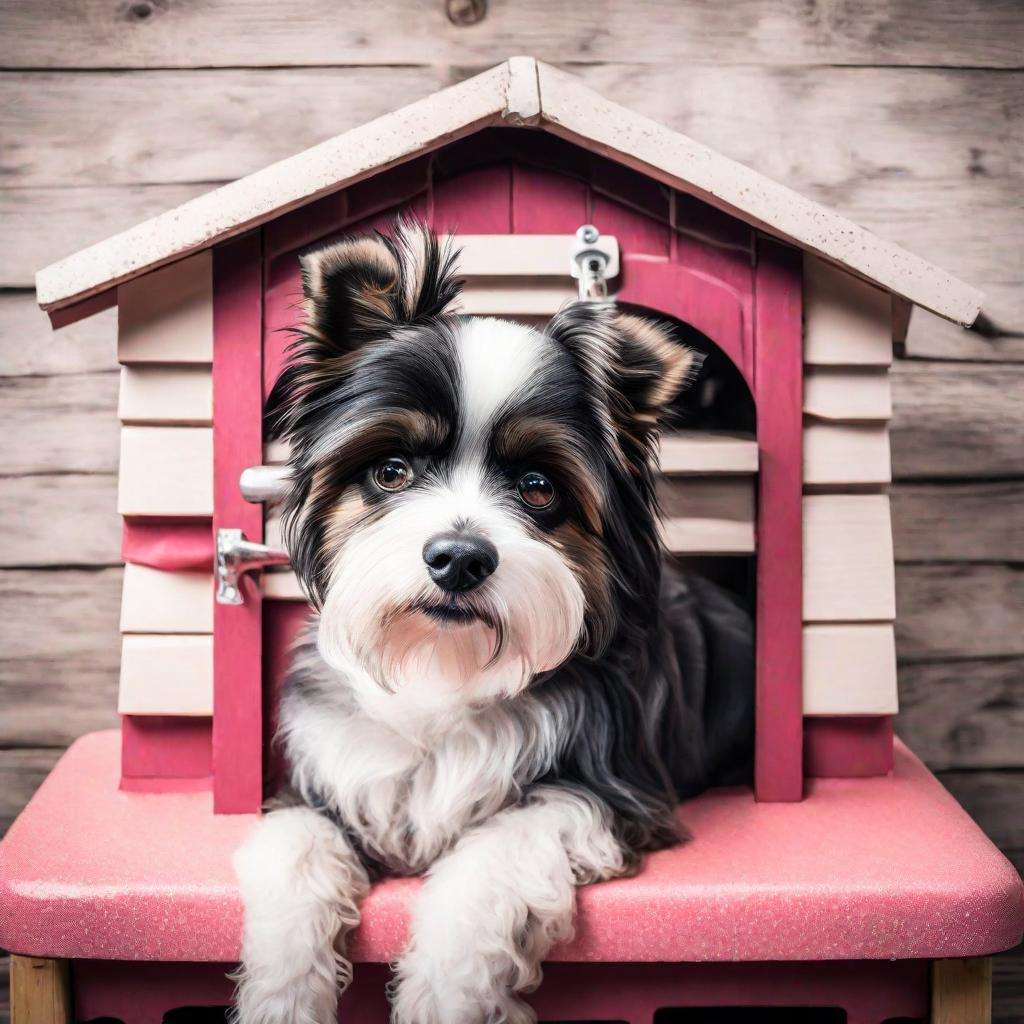
For those who are looking to take their dog’s grooming to the next level, here are some advanced techniques to consider:
1. Hand-Stripping
This technique is common for wire-haired breeds like Terriers. Hand-stripping involves plucking the dead hairs from the coat, which can help maintain the wire texture and color.
2. Creative Styling
If you have a breed with a versatile coat, you can explore creative styling. This includes unique trims and styles that showcase your dog’s personality and charm.
3. Show Grooming
For those entering dog shows or competitions, show grooming is a specialized skill. It involves meticulous attention to detail to ensure your dog meets the breed standard.
4. Asian Fusion Grooming
A trendy style that incorporates Asian-inspired grooming techniques, often resulting in adorable and unique looks.
Addressing Specific Coat Issues
Some dogs may have specific coat issues that require extra care and attention:
1. Allergies
If your dog has allergies, grooming is crucial to remove potential irritants from their coat. Consider hypoallergenic shampoos and regular baths to alleviate their discomfort.
2. Dandruff and Dry Skin
Dogs can experience dry skin and dandruff, especially during the winter months. Use moisturizing shampoos and consider adding fatty acid supplements to their diet to promote healthy skin.
3. Fleas and Ticks
Regular grooming sessions are an excellent opportunity to check for fleas and ticks. Use preventive measures and consult your vet if infestations occur.
The Grooming Schedule
Creating a grooming schedule ensures that you consistently meet your dog’s grooming needs. Here’s a suggested schedule:
Daily:
- Brushing
- Eye and ear cleaning
- Teeth brushing (several times a week)
Weekly:
- Bathing (if needed)
- Paw pad care
- Nail trimming (if needed)
Monthly:
- Full-body grooming session (coat trimming, styling, etc.)
- Anal gland expression (if necessary)
Seasonal:
- Specialized grooming for changing seasons (spring and fall)
Grooming for Senior Dogs
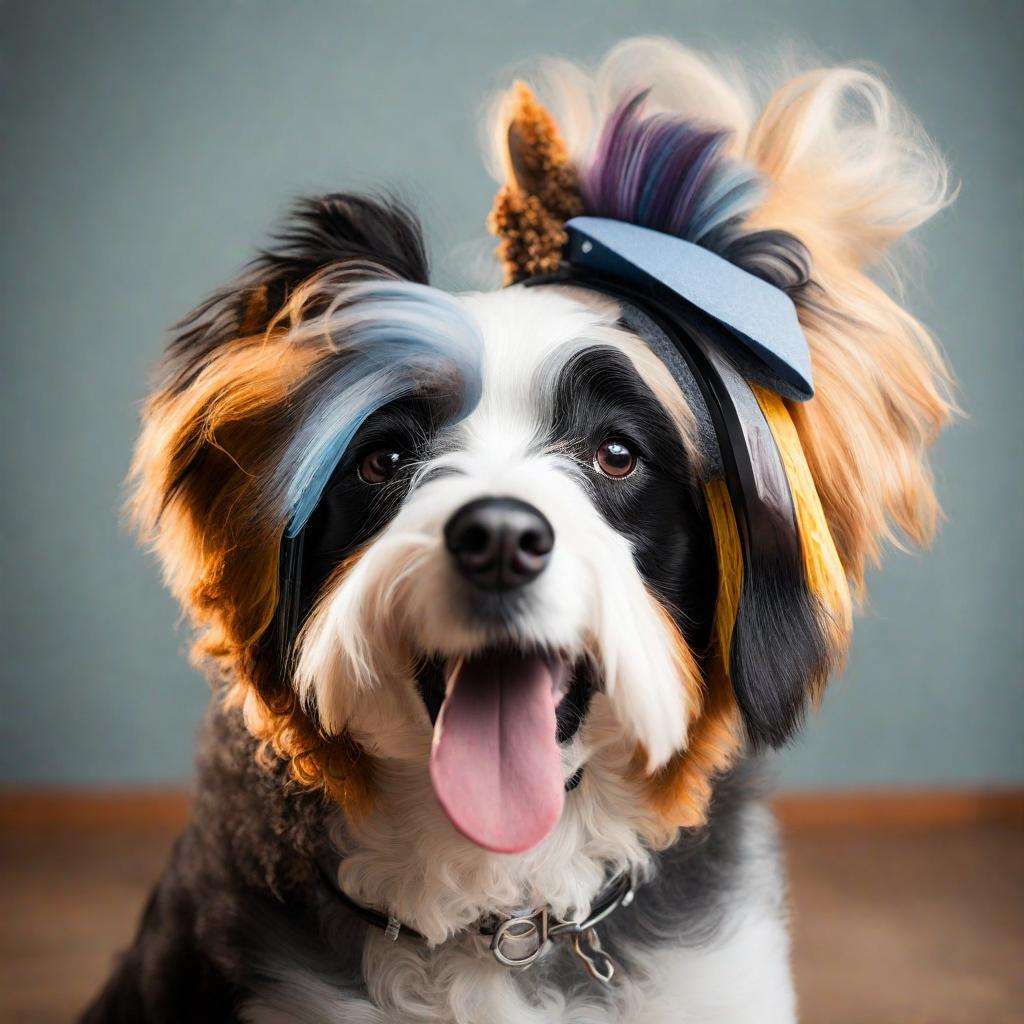
As dogs age, their grooming needs may change. Senior dogs may require more gentle handling and shorter grooming sessions. Be mindful of their comfort and consider padded surfaces for them to stand on during grooming.
Conclusion: Your Dog’s Well-Being Matters Most
In the world of dog house grooming, your commitment to your dog’s well-being shines through. Whether you opt for DIY grooming or enlist the help of a professional, the key is to prioritize your furry friend’s health, happiness, and comfort.
So, embark on this grooming journey with confidence, armed with the knowledge and tools to keep your beloved pet looking and feeling their absolute best. After all, a well-groomed pup is a happy pup!
In the world of dog house grooming, your dedication to your furry friend’s health and happiness is paramount. Whether you’re a novice or an experienced groomer, the key is to adapt your grooming routine to meet your dog’s specific needs.
Remember that grooming is not just a chore but an opportunity for bonding with your pet. So, embrace this aspect of pet care with enthusiasm and love, and watch your dog radiate with health and beauty.
FAQ
| Question | Answer |
|---|---|
| 1. What is the average lifespan of a Labrador Retriever? | The average lifespan of a Labrador Retriever is around 10 to 12 years. |
| 2. How often should I groom a long-haired dog breed? | Long-haired dog breeds should be groomed at least once a week to prevent matting and tangles. |
| 3. Are there specific grooming requirements for puppies? | Yes, puppies require gentle grooming sessions to introduce them to the process and establish good habits. |
| 4. What are the benefits of regular teeth brushing for dogs? | Regular teeth brushing helps prevent dental issues, bad breath, and gum disease in dogs. |
| 5. Should I bathe my dog more often during the summer? | Yes, dogs may need more frequent baths in summer to remove sweat, dirt, and prevent skin issues. |
| 6. What are the signs that my dog has an ear infection? | Signs of an ear infection in dogs include head shaking, ear odor, redness, and excessive ear scratching. |
| 7. How can I help my senior dog feel comfortable during grooming? | Senior dogs may benefit from shorter grooming sessions and padded surfaces for comfort. |
| 8. Is hand-stripping suitable for all dog breeds? | Hand-stripping is commonly used for wire-haired breeds like Terriers but may not be suitable for all breeds. |
| 9. What should I do if I encounter matting in my dog’s fur? | For mild matting, use a detangling spray and comb gently. Severe matting may require professional help. |
| 10. What’s the purpose of anal gland expression in grooming? | Anal gland expression is performed to alleviate discomfort and prevent anal gland impaction in dogs. |

